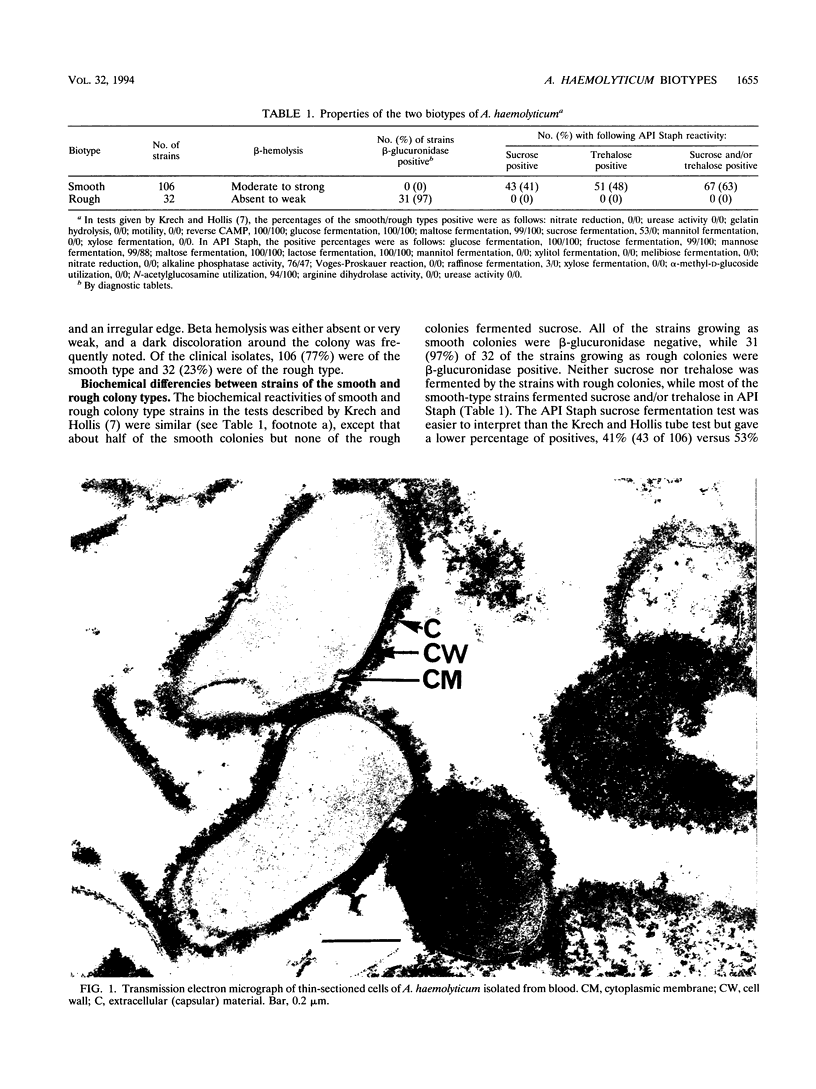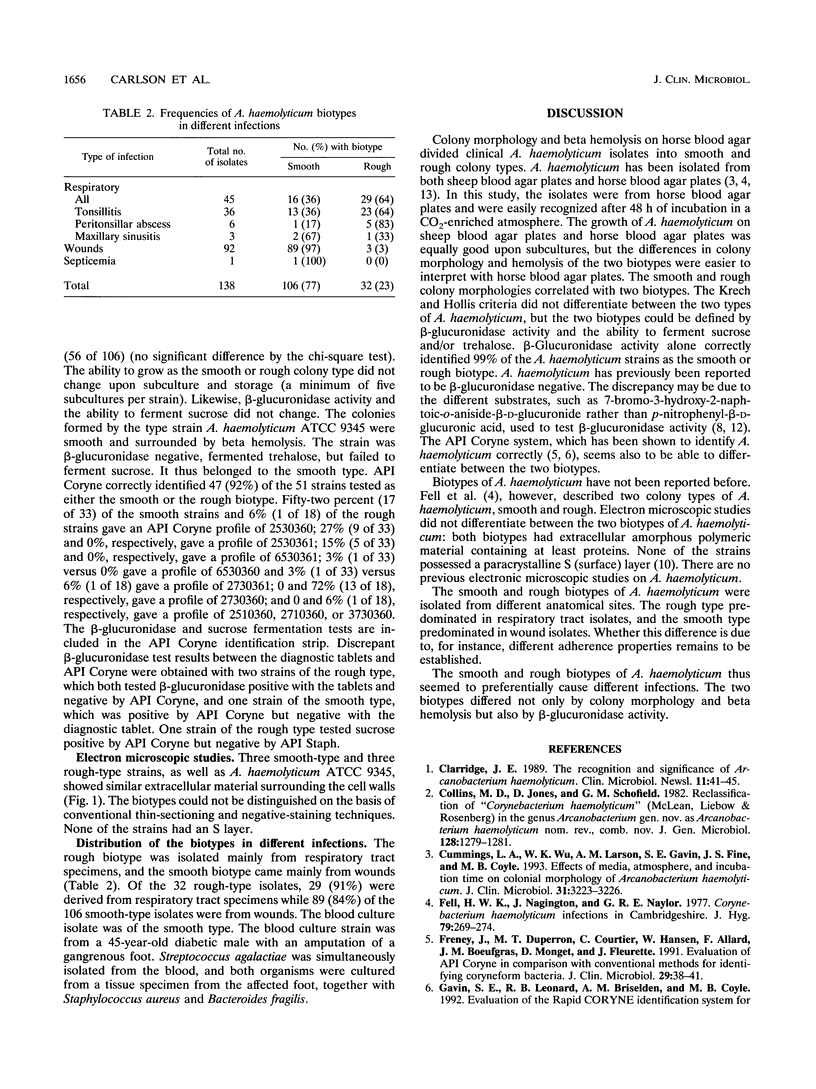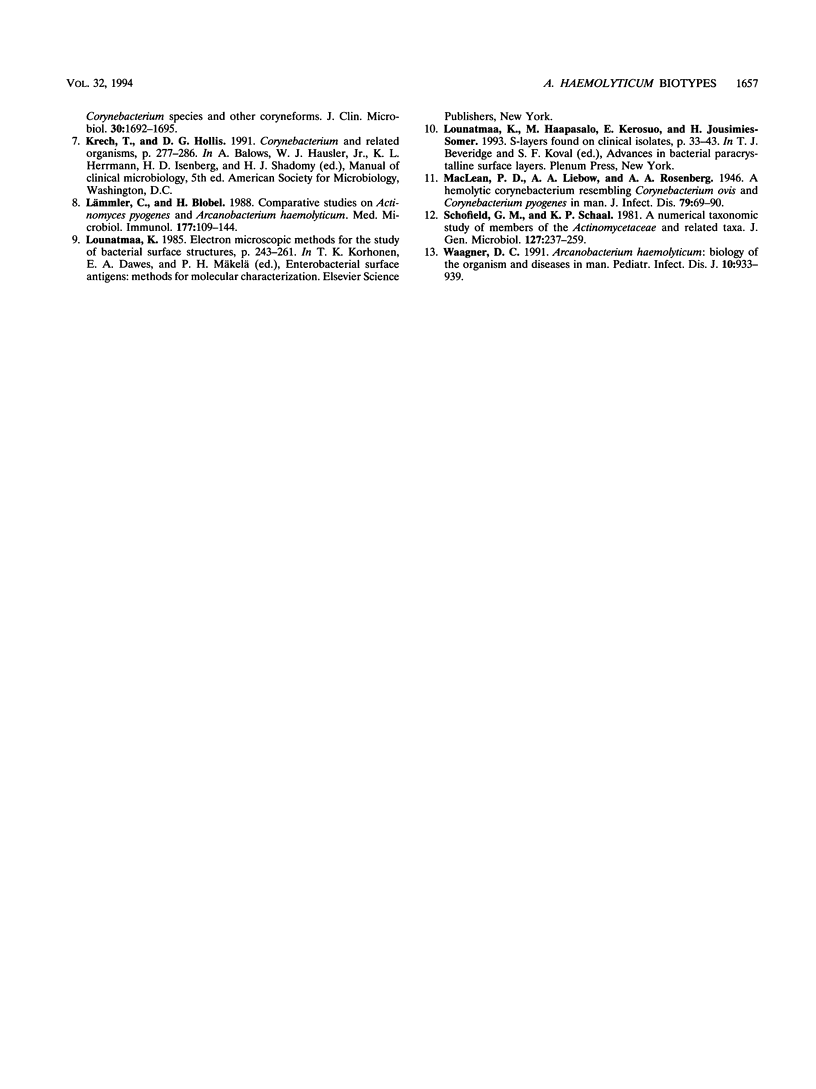Abstract
Colony morphology, beta hemolysis on horse blood agar, beta-glucuronidase activity, and ability to ferment sucrose and/or trehalose defined two biotypes of Arcanobacterium haemolyticum. One, the smooth type, grew as smooth, beta-hemolytic colonies and was beta-glucuronidase negative but often fermented sucrose and/or trehalose, while the other, the rough type, grew as rough colonies and was nonhemolytic, beta-glucuronidase positive, and negative for sucrose and trehalose fermentation. About 75% of the A. haemolyticum strains studied (n = 138) were of the smooth type. The smooth type predominated in wound infections, while the rough type was isolated almost exclusively from respiratory tract specimens; thus, 84% of the smooth-type strains were derived from wounds and 91% of the rough-type strains were isolated from respiratory tracts.
Full text
PDF



Images in this article
Selected References
These references are in PubMed. This may not be the complete list of references from this article.
- Collins M. D., Jones D., Schofield G. M. Reclassification of 'Corynebacterium haemolyticum' (MacLean, Liebow & Rosenberg) in the genus Arcanobacterium gen.nov. as Arcanobacterium haemolyticum nom.rev., comb.nov. J Gen Microbiol. 1982 Jun;128(6):1279–1281. doi: 10.1099/00221287-128-6-1279. [DOI] [PubMed] [Google Scholar]
- Cummings L. A., Wu W. K., Larson A. M., Gavin S. E., Fine J. S., Coyle M. B. Effects of media, atmosphere, and incubation time on colonial morphology of Arcanobacterium haemolyticum. J Clin Microbiol. 1993 Dec;31(12):3223–3226. doi: 10.1128/jcm.31.12.3223-3226.1993. [DOI] [PMC free article] [PubMed] [Google Scholar]
- Fell H. W., Nagington J., Naylor G. R., Olds R. J. Corynebacterium haemolyticum infections in Cambridgeshire. J Hyg (Lond) 1977 Oct;79(2):269–274. doi: 10.1017/s0022172400053080. [DOI] [PMC free article] [PubMed] [Google Scholar]
- Freney J., Duperron M. T., Courtier C., Hansen W., Allard F., Boeufgras J. M., Monget D., Fleurette J. Evaluation of API Coryne in comparison with conventional methods for identifying coryneform bacteria. J Clin Microbiol. 1991 Jan;29(1):38–41. doi: 10.1128/jcm.29.1.38-41.1991. [DOI] [PMC free article] [PubMed] [Google Scholar]
- Gavin S. E., Leonard R. B., Briselden A. M., Coyle M. B. Evaluation of the rapid CORYNE identification system for Corynebacterium species and other coryneforms. J Clin Microbiol. 1992 Jul;30(7):1692–1695. doi: 10.1128/jcm.30.7.1692-1695.1992. [DOI] [PMC free article] [PubMed] [Google Scholar]
- Lämmler C., Blobel H. Comparative studies on Actinomyces pyogenes and Arcanobacterium haemolyticum. Med Microbiol Immunol. 1988;177(2):109–114. doi: 10.1007/BF00189532. [DOI] [PubMed] [Google Scholar]
- Schofield G. M., Schaal K. P. A numerical taxonomic study of members of the Actinomycetaceae and related taxa. J Gen Microbiol. 1981 Dec;127(2):237–259. doi: 10.1099/00221287-127-2-237. [DOI] [PubMed] [Google Scholar]
- Waagner D. C. Arcanobacterium haemolyticum: biology of the organism and diseases in man. Pediatr Infect Dis J. 1991 Dec;10(12):933–939. [PubMed] [Google Scholar]



